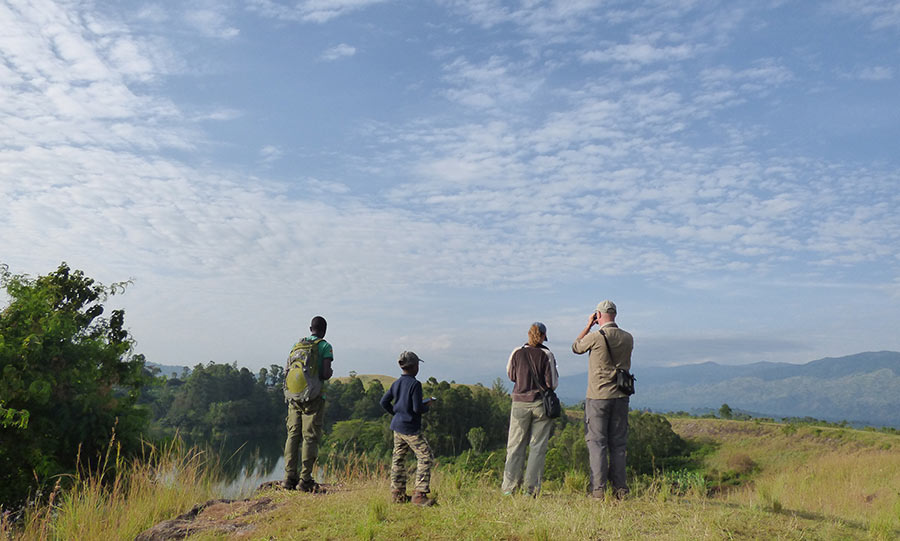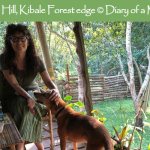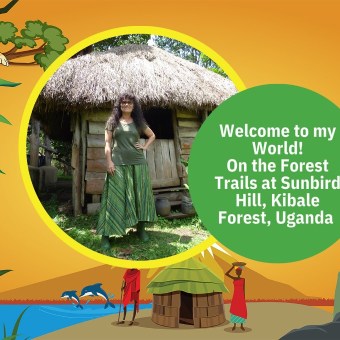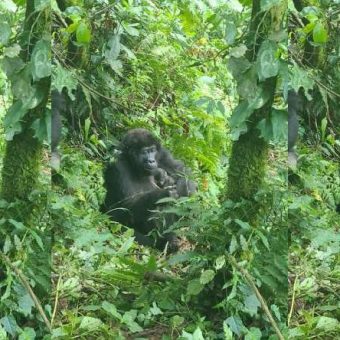
Pelicans and Great-crested Grebes – monitoring birds at Lake Saka on behalf of NatureUganda
Billing and cooing around Lake Saka – or “more birdwatching with Rog!”
The sight of four Sacred Ibis flying overhead is “a good sign” according to Roger, as we drive down the dusty back roads of Fort Portal towards Lake Saka. “I’m surprised to see them here,” he says. A minute later two Grey Crowned Cranes follow their route. The road to Mountains of the Moon University is so dusty a boda boda drive towards us with a face mask on.
Roger is anxious about what birdlife we’ll see or more correctly what we won’t see at Lake Saka. When he lived in Fort Portal he walked around this lake four times a week. He is concerned at what damage may been done in the year since his visit. Roger is prepared to be disappointed.
We park at the university and within minutes Roger’s face lights up as he hears the sound of a Red-winged Francolin. “I didn’t think they’d still be here!” He says. “There were three pairs here before. It’s the only place I’ve seen them in Uganda.”
At an elevation of 1,576 metres, we are around 400 metre higher than our forest edge home and this is reflected in the different bird species.
Our group of guides and casual birders sets to work following the transects designated for the NatureUganda bird population monitoring. “There’s no time for birdwatching, we have to focus on the transects,” orders Roger. “We can dilly dally later, on our walk back.”
Julia takes notes and Dillon (aged 8 1/2) watches the clock for us.
I spy a Red-eyed Dove on the overhead wire.
“Palm nut Vulture!” Calls Ambrose.
“A Windchat – a migrant.”
A Pink-backed Pelican sits on the surface of the lake. “This is fabulous!” Exclaims Rog.
“African Fish Eagle in the distance” calls Ambrose.
Roger points out the African Stonechat. What a pretty pair of birds they are. The female is quite different to the male and has a reddish pink breast.
Sightings come quickly. There’s no time to watch the birds, only to record them and march on. A small flock of Black and White Manikins sit on bleached ears of maize.
“Chubb’s Cisticola” someone shouts – and a pause to check its ID in Fanshawe’s “Birds of East Africa.”
The striking Baglefecht’s Weaver poses in Erthrynia.
“Ants!” Shouts Dianah. We step over a trail of red (biting) ants across our path.
We walk down a quiet marram path that slopes gently downhill. We’ve been walking for twenty minutes and only passed two of three other people. There are no cars, no boda bodas. All we can hear are the sounds of nature.
In the distance are the misty foothills of the Rwenzori Mountains. A speck of white passes high in the sky, lit by the sun. “Little Egret,” calls Roger.
A Cinnamon-chested Bee eater perches on a branch above our heads.
“Ah BEAUTIFUL… !” Everyone coos at the same time.
“Charlotte – take a photo!”
“There’s no time for birdwatching” Julia shouts sarcastically, mimicking Roger, pushing us on.
There is the sound of running water and the air cools as we cross a small stream. Above it is a large messy Hammerkop nest in the crook of a tree. A man washes his boda boda in the flowing water.
“Isn’t there a law against that?” Muses Roger loudly as we file past the naughty boda driver.
We climb a long slope that opens high above the lake. “African Open-billed Stork!” Ambrose shouts. (I love those prehistoric-looking birds).
A lone cow bellows loudly.
We see another six African Open-billed Storks, then three more. Close by, eleven Bronze Manikins fly through the tall grass. In this lovely unspoiled piece of countryside there are few houses.
“We haven’t found a Grebe yet,” Roger. Despite some good bird sightings, his anxiety persists.
As we wander along the path, the team calls out bird names:
Two Northern Black Flycatchers… Short-winged Cisticola… Yellow-throated Longclaw… Eight Pink-backed Pelicans. “This is brilliant, there only used to be one!” Cries Rog.

I get a close-up shot of a Lavaillant’s Cuckoo in an avocado tree next to the path.
We hear the plaintive sound of cranes in the distance over the lake. A Variable Sunbird perches on the tip of a matooke leaf. “Pretty!” Says Dianah.
Eastern Grey Plantain eater… two Palm Swifts in flight…
“New section guys!” Shouts Julia every few minutes, as she records all the data.
Roger points to a ridge of the Rwenzori Mountains. “I’ve seen Angola Colobus up there,” he says.
I point to a Little Brown Bird. I know what it isn’t but I don’t know what it is. I have a feeling we haven’t counted it yet. “It’s a Tawny-flanked Prinia,” he corrects me, “a type of warbler.”
On Lake Kigere, we see four Yellow-billed ducks and – finally – two Great-crested Grebes!
This is the first in a series of blogs about the NatureUganda bird population monitoring of Kibale Conservation Area, which is carried out twice-yearly by a team from Sunbird Hill. The Kibale Conservation Area comprises Toro Semliki Wildlife Reserve, Semliki National Park, Kibale National Park (Sebitoli, Ngogo Road Kanyanchu, Mainara, Kanyawara), Lake Saka and Lake Bikere and Toro Botanical Gardens in Fort Portal and Katonga Wildlife Reserve.
Our friend Roger Skeen takes centre stage in many of my birding blogs. Here are a few favourites:
A birding safari here in my backyard. Traversing the swamp from Kampala en route to Port Bell
Operation Shoebill – Uganda’s Big Birding Day Mabamba Bay
A disgusting day out – counting vultures in Kampala’s abattoirs




























That was a nice expose of the birding infrastructure in that great hinterland. Thank you for your information. What an attractive scenery to enjoy for the many tourist enthusiasts.
The area around Lake Saka is beautiful but, as with everywhere in Uganda, it needs urgent protection before it is overfarmed and spoiled. The cutting of trees and using of fertilisers quickly impacts the bird population.
The road has recently been graded. Although that might be good news for tourists visiting the nearby Amabere Caves, we need sustainable tourism with minimum environmental impact.